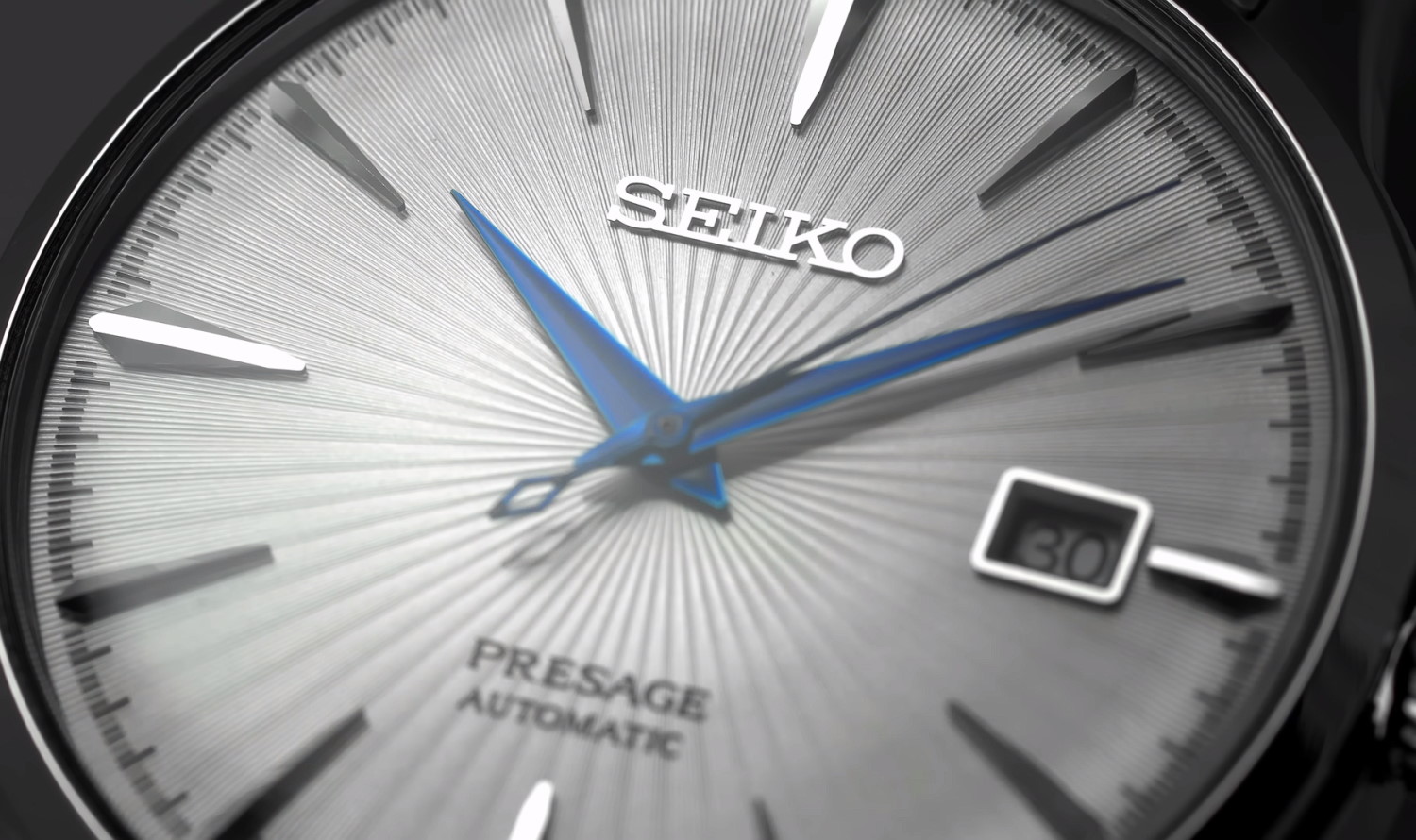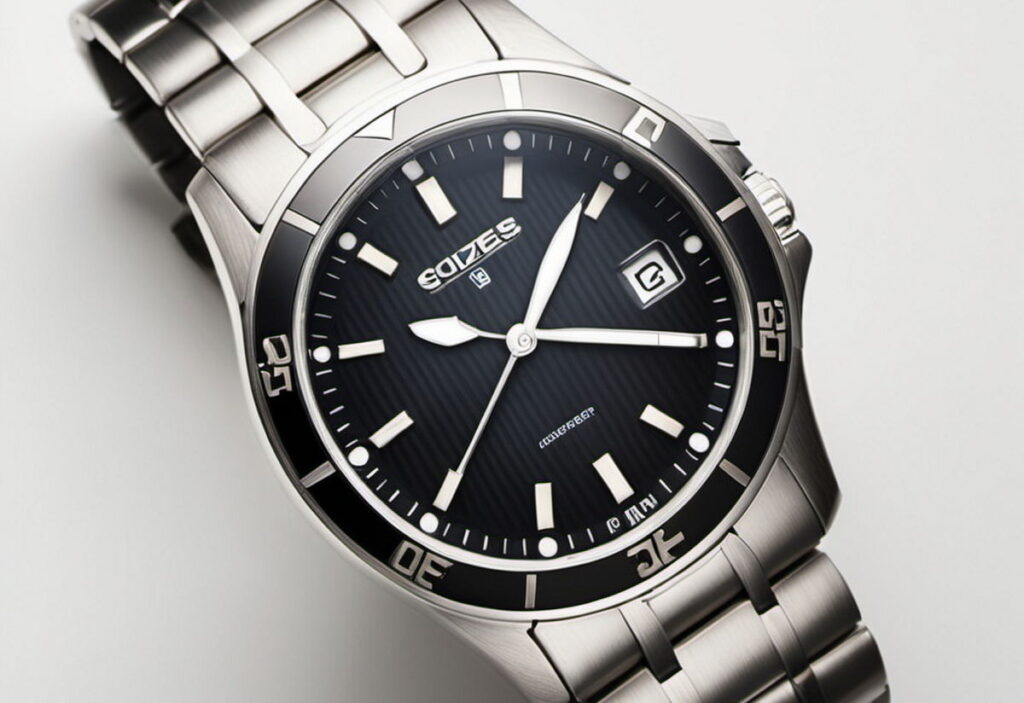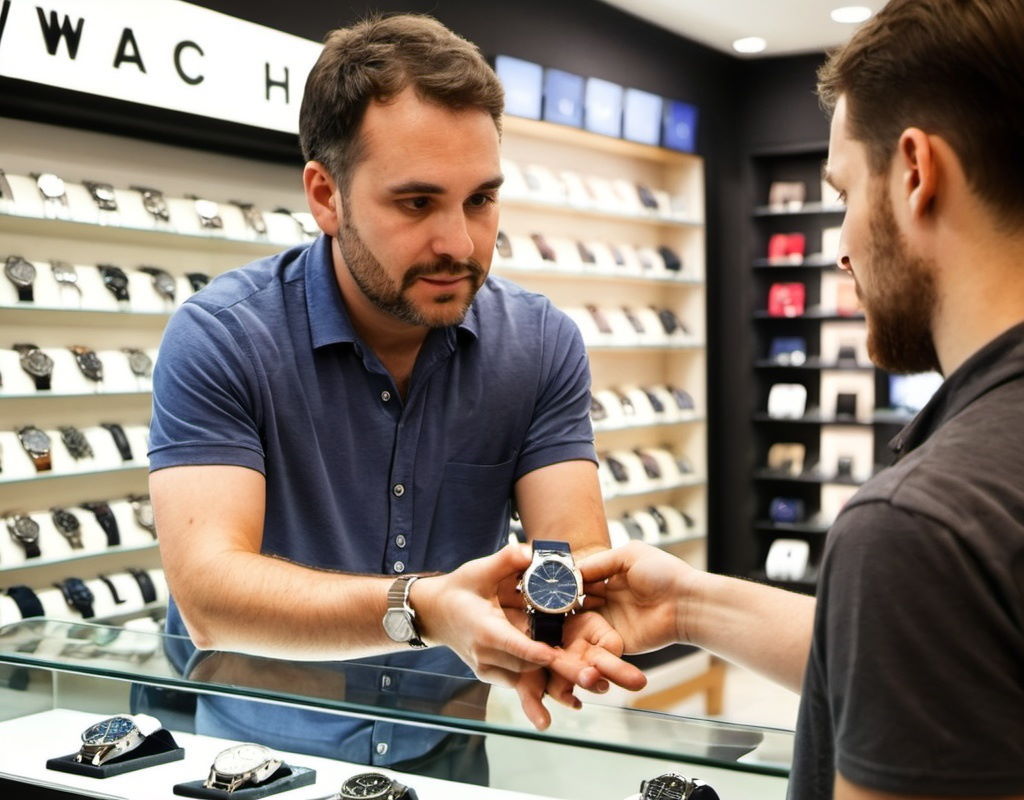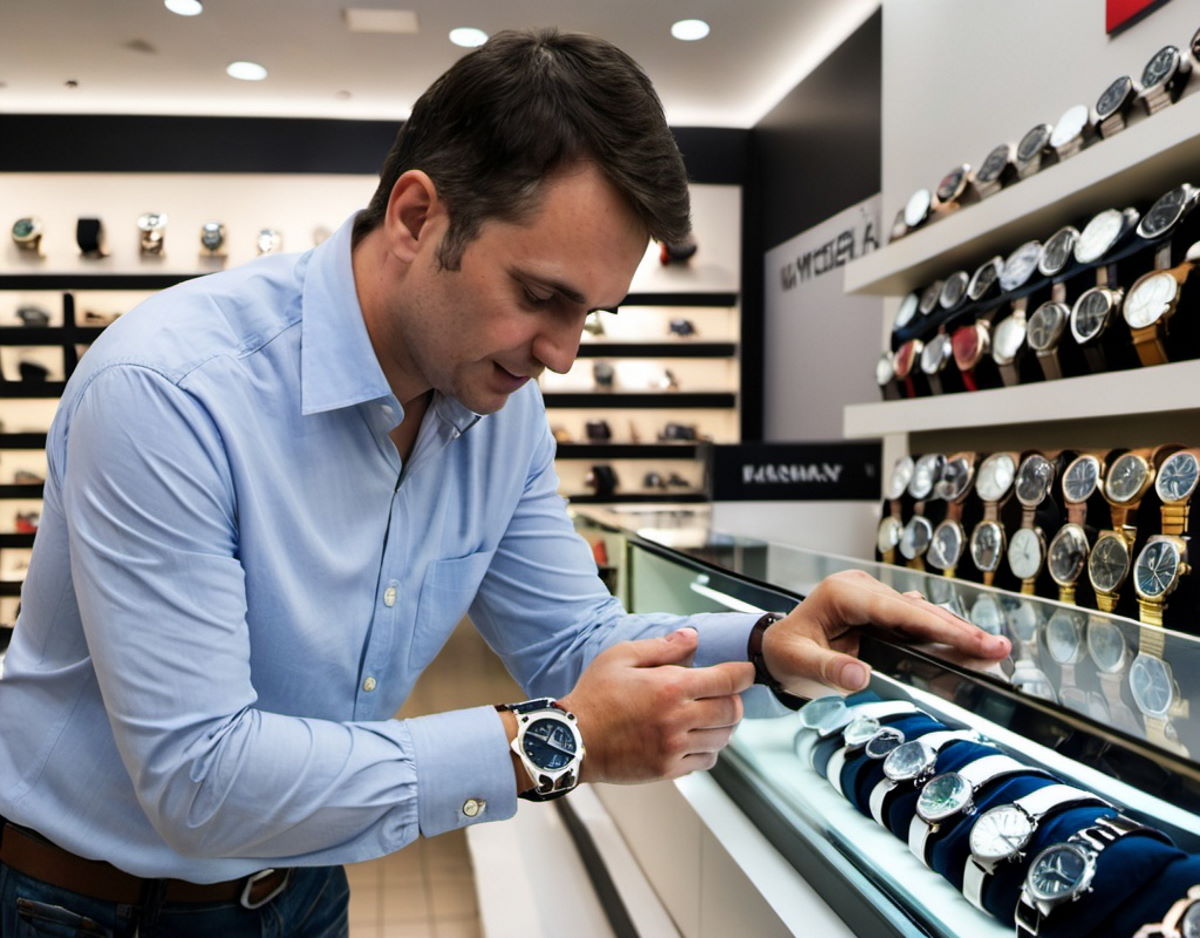A watch is more than just an accessory for a man; it’s a reflection of his lifestyle, character, status, and taste. From the type of watch he wears to the materials and design, every detail speaks volumes about his personality and how he presents himself to the world. Whether it’s a sleek dress watch that complements a business suit or a rugged dive watch that signals an adventurous spirit, the right timepiece can enhance a man’s overall image and make a lasting impression.
Choosing the perfect watch is about more than just telling time – it’s about selecting a piece that aligns with who you are and how you want to be perceived. In this guide on how to choose a men’s watch, I will share my own approach and the key factors to consider when selecting a timepiece that not only suits your wrist but also mirrors your unique style and personality.
Things to take into account when choosing a watch
Before diving into the world of watches and exploring the countless options available, it’s essential to take a step back and consider a few key factors. These considerations will help you narrow down your choices and focus on the models that best suit your needs, style, and lifestyle

Related Post
If you’ve ever considered Seiko as your first watch, you can check out this list of suitable models.
By understanding what to prioritize, you can streamline the decision-making process and ensure that the watch you choose is a perfect match for you in every way. Whether it’s the type of occasion you need it for, your personal preferences, or practical features, taking these elements into account will make the selection process much smoother and more satisfying.
Budget
One of the most important aspects to consider when choosing a watch is your budget. Setting a budget helps narrow down your options and keeps your search focused. However, it’s crucial not to set overly strict limits. Sometimes, a watch that perfectly fits your style and needs might be just $50-$100 more than your initial budget, and those extra dollars could make all the difference in long-term satisfaction.
I’ve often found that when I prioritize savings over what I truly desire, I end up regretting it. The amount I saved initially seems insignificant later on, especially when I start thinking about the watch I really wanted. A watch isn’t just a purchase for today; it’s something you’ll likely wear for a decade or more. If you compromise now, you might find yourself wanting to buy another watch later on – one that better suits your tastes – leading to unnecessary spending. So, while it’s wise to have a budget, give yourself some flexibility to ensure you choose a watch that you’ll love and cherish for years to come.
Lifestyle
When choosing a watch, it’s crucial to ensure that it fits seamlessly into your lifestyle. A watch should complement not only your personality but also the clothes you wear regularly. If you’re not looking to build a diverse watch collection, selecting a timepiece that matches your everyday wardrobe is essential to avoid ending up with a watch that you rarely wear.
For instance, if you primarily wear business attire or formal clothing, a classic dress watch with a sleek, minimalist design and a leather strap would be a perfect fit. It’s elegant and understated, ideal for the office, meetings, or formal events. On the other hand, if your wardrobe leans towards casual or sporty outfits, a dive watch or a chronograph with a durable metal or rubber strap would be more appropriate. These styles are robust, practical, and add a sporty edge to casual clothing.
A poor fit would be something like pairing a bulky, sporty chronograph with a formal suit – it’s a mismatch that can throw off your entire look. Similarly, a delicate dress watch might look out of place when worn with athletic gear or rugged casual wear.
To avoid wearing your new watch as often as you attend weddings or reunions, consider the clothes you wear most frequently. If your daily routine involves casual jeans and T-shirts, opt for a versatile, everyday watch that complements that style. By aligning your watch choice with your regular wardrobe, you’ll get more use and enjoyment out of it, making it a worthwhile addition to your life.
Audience and occasion
Another critical aspect to consider when choosing a watch is where you’ll be wearing it and the audience you’ll be among. The setting and the people around you can significantly influence the type of watch that’s most appropriate. Whether you’re a student, a professional, or someone working in a specialized field, the watch you choose should align with your environment and the expectations of those around you.
For example, if you’re a university student, a casual, versatile watch like a simple field watch or a sporty chronograph might be the best fit. These watches are durable, easy to wear with everyday outfits, and won’t draw unnecessary attention in a laid-back, academic setting. In contrast, if you’re an engineer working in a factory, you might want to consider a rugged, durable watch, such as a dive watch or a digital watch with shock resistance and a sturdy design that can withstand harsh conditions.
On the other hand, if you’re a businessman or regularly attend formal meetings, a sleek dress watch or a classic timepiece from a well-known brand would be more appropriate. These watches convey a sense of professionalism and sophistication, fitting seamlessly into a corporate environment where appearance matters.
Wearing a watch that doesn’t fit the environment or occasion can lead to awkwardness or even embarrassment. For instance, wearing a flashy, oversized sports watch with multiple functions to a formal business meeting can come across as unprofessional or out of place. Similarly, a delicate, luxurious dress watch worn in a factory or outdoor setting might not only seem inappropriate but could also be easily damaged.
The key to knowing how to choose a watch that not only matches your personal style but also fits the context of where you’ll be wearing it and the people you’ll be interacting with. By doing so, you ensure that your watch enhances your appearance and meets the expectations of your surroundings, rather than clashing with them.
Maintenance
For watch newbies, it’s essential to understand that owning a watch involves regular maintenance, no matter what type of watch you choose. While quartz watches are generally low-maintenance and highly durable, they still require periodic attention. The battery in a quartz watch usually needs to be replaced every one to two years, and as the watch ages, the battery life may degrade, requiring more frequent replacements.
If you’re considering an automatic watch, keep in mind that these timepieces also demand regular upkeep. Automatic watches rely on the movement of your wrist to stay powered, but they also need routine servicing, known as “repassage,” to keep the intricate mechanisms running smoothly. This maintenance typically costs a few hundred dollars every few years. Additionally, automatic watches are more delicate, meaning that accidentally damaging the crystal or winding mechanism can lead to expensive repairs.
Whether you opt for a quartz or automatic watch, it’s important to be aware that regular maintenance is part of the commitment. Understanding these ongoing needs will help you make a more informed decision and ensure that your watch remains in excellent condition for years to come.
Common errors when buying a watch

Even the most detailed step-by-step guides can only take you so far when choosing the perfect watch. While it’s crucial to understand the types, features, and styles, the real key to making the right choice lies in understanding why you’re buying a watch and how you’re approaching the purchase. Without clarity on these fundamental aspects, even the most informed decisions can fall short.
This section on how to buy a watch for a man will explore common errors that watch enthusiasts often make, highlighting the importance of aligning your purchase with your true intentions and the way you go about selecting your timepiece. By avoiding these pitfalls, you’ll be better equipped to find a watch that truly resonates with your needs and desires.
Focus only on brand name
As a new watch enthusiast, it’s natural to develop an admiration for a particular brand. The allure of a brand’s reputation, history, or iconic designs can be captivating. However, focusing solely on watches from that one brand might limit your options and cause you to overlook other models that could be a better fit for your lifestyle, taste, or budget. By restricting yourself to a single brand, you might miss out on watches that not only suit you better but also align more closely with what you actually desire.
Instead, I recommend broadening your horizons by exploring a range of watch brands within your budget, design preferences, or even their country of origin. For example, if you’re drawn to minimalist designs, you could explore several brands known for their clean aesthetics, rather than sticking to just one. Or, if you have a specific budget in mind, compare what different brands offer within that price range. This approach ensures that you don’t miss out on a watch that could perfectly suit your style, needs, and long-term satisfaction.
Overcomplication with features
Another common error when buying a watch is opting for additional features, like a chronograph or GMT function, that can significantly increase the price – features that you may not actually need. It’s easy to get caught up in the allure of these complex functionalities, but if you’re not someone who needs to measure elapsed time or track multiple time zones, these features might end up being more of a novelty than a necessity.
This tendency to overcomplicate with features doesn’t stop many watch enthusiasts from purchasing dive watches with rotating bezels, even if they never set foot near a diving board. In reality, the bezel might only get used a few times in the kitchen to time a frying pan rather than underwater. While it’s perfectly fine to appreciate and enjoy these features, it’s important to ask yourself whether they add real value to your daily life or if you’re just paying for something that looks cool but serves little practical purpose.
By focusing on the features that truly matter to you, you can avoid unnecessary expenses and select a watch that fits your needs without overcomplicating things.
Purchase without trying a watch on
Another frequent mistake when buying a watch is making the purchase without trying it on first. While online shopping offers convenience, nothing beats the experience of physically seeing how a watch looks and feels on your wrist. A watch that looks great in pictures might not sit comfortably or suit your style once worn. Factors like size, weight, strap fit, and overall presence can only be fully appreciated in person.
It’s always a good idea to visit an offline store and try on different models before making a decision. This hands-on experience gives you a better sense of the watch’s proportions, how it complements your wrist, and whether it truly fits your lifestyle. Online stores, however, are fantastic for creating a watch wishlist, comparing specifications, and often offer more attractive prices. Once you’ve physically tried on the watch and confirmed it’s the right one for you, you can then confidently buy it online, potentially saving money and getting the best deal.
This approach ensures that you make a thoughtful, well-informed purchase, reducing the chances of disappointment or the hassle of returning a watch that doesn’t meet your expectations.
Trying to impress others
Another common error when buying a watch is making the purchase with the intention of impressing others, rather than focusing on what you can comfortably afford and truly like. It’s tempting to go after a luxury brand or flashy model to gain admiration or status, but this can quickly lead to financial strain. Watches meant to impress others may come with a price tag far beyond your budget, resulting in an unnecessary financial burden.
Additionally, if the watch doesn’t reflect your personal taste, you might end up wearing something that feels more like a burden than a joy. A watch should make you feel good every time you wear it, not remind you of the pressure to live up to others’ expectations. By choosing a watch that aligns with your style, needs, and budget, you’ll avoid the stress of overspending and ensure that your timepiece brings genuine satisfaction rather than frustration.
Buying what you can afford instead of what you like
Another common mistake when buying a watch is settling for what you can afford instead of what you truly like. This often happens to overly rational watch enthusiasts who take the advice of setting a budget too strictly. While it’s wise to have a budget in mind, some buyers end up limiting themselves to models within their price range that don’t actually appeal to them. As a result, they might end up wearing a watch they don’t enjoy, leading to long-term dissatisfaction.
It’s crucial to strike a balance between sticking to your budget and selecting a watch you genuinely love. In some cases, it’s worth extending your budget slightly if nothing within the original limit excites you. After all, a watch is often a long-term investment, and it should bring you joy every time you wear it. That said, the price of the watch should still fit within your overall financial situation. Extending your budget shouldn’t mean straining your finances or compromising your well-being. Otherwise, you’re only deceiving yourself by prioritizing the watch over your financial stability.
By keeping a wise balance between what you can afford and what you like, you’ll avoid regret and ensure that your purchase feels both rewarding and responsible.
Sacrificing important things
Another major error when buying a watch is sacrificing important, essential needs in favor of purchasing a luxury timepiece. A watch, after all, is not a necessity – it’s a functional accessory that enhances your style and adds convenience, but it’s far from essential in your day-to-day life. Prioritizing a watch over basic needs can lead to regrettable decisions, both financially and personally.
For instance, choosing to spend money on an expensive watch instead of addressing health issues, like curing your teeth, or replacing vital household items – such as buying a new bed to replace your broken, uncomfortable one – can lead to bigger problems. Imagine being a person who wears a high-end watch but hasn’t addressed crucial health issues. A toothless person with a luxury watch is still a toothless person, and worse, it shows they value material things more than their own well-being.
The truth is, if you’re neglecting your basic needs in order to afford a watch, you’re not only harming yourself but also giving others a misguided impression of your priorities. A timepiece should come after you’ve taken care of the essentials – your health, comfort, and well-being should always come first. Investing in a watch should be a reward, not something that causes you to sacrifice what’s most important.
Step-by-step guide on how to choose a watch

Choosing the perfect watch is both an exciting and personal experience. A well-chosen watch reflects your personality, style, and lifestyle, while also becoming a reliable accessory you’ll use for years to come. But with so many styles, features, and price points available, making the right decision can feel overwhelming. This step-by-step guide on how to buy a men’s watch will walk you through the process of selecting a watch, covering everything from the type of watch to the brand and materials. By following these steps, you’ll be better equipped to make a confident, well-informed choice that fits your needs, style, and budget.
Choose your watch type
The first decision when choosing a watch is selecting the type that best suits your lifestyle. There are three main types to consider: quartz watches, automatic watches, and smartwatches.
- Quartz Watches: Powered by a battery, these are the most accurate and low-maintenance option. They’re ideal if you’re looking for reliability and convenience without much upkeep.
- Automatic Watches: These watches are powered by the movement of your wrist and are a favorite among enthusiasts for their craftsmanship. However, they require regular winding or wearing and occasional servicing.
Consider your lifestyle when selecting the type of watch. If you prefer timeless craftsmanship, go for an automatic. For practicality, quartz may be your best bet. And if you want the latest tech, a smartwatch will be ideal.
Choose watch materials
The next step is to choose the materials for the watch case, strap, and crystal (the glass that covers the dial). The materials affect the durability, weight, and aesthetic of the watch.
- Case: Common materials include stainless steel, titanium, and ceramic. Stainless steel is durable and versatile, titanium is lighter and hypoallergenic, while ceramic is highly scratch-resistant and offers a premium feel.
- Strap: You can choose between leather, metal, rubber, or fabric straps. Leather offers a classic, formal look, while metal bracelets are sturdy and more durable. Rubber and fabric straps are excellent for sporty, casual watches.
- Crystal: The most common options are sapphire, mineral glass, or acrylic. Sapphire is the most scratch-resistant, mineral glass offers a balance between cost and durability, and acrylic is less expensive but prone to scratches.
Your choice of materials should reflect your intended use of the watch. For formal wear, a leather strap and a stainless steel case are elegant and refined, whereas a rubber strap and titanium case may be better suited for sports or outdoor activities.
Define required watch features and characteristics
Before deciding on a specific model, it’s important to consider which features are essential for your watch. Watches come with a range of features, and it’s easy to get caught up in choosing those you may never actually use.
- Chronograph: This feature allows you to use the watch as a stopwatch—ideal for those who enjoy sports or need precise time tracking.
- GMT Function: Useful for travelers, the GMT feature allows you to track multiple time zones.
- Water Resistance: If you plan to wear your watch while swimming or diving, make sure it’s water-resistant to the appropriate depth.
- Date Function: A simple yet practical addition for daily wear.
Avoid overcomplicating things by choosing only the features you’ll actually use. For example, a diving bezel might seem exciting, but if you don’t dive or time activities regularly, it may just add to the cost without enhancing your experience.
Choose a watch size
Size is an often overlooked but essential aspect of selecting a watch. A watch that is too large or too small for your wrist can feel uncomfortable and look disproportionate.
- Case Diameter: Men’s watches typically range from 38mm to 46mm, while women’s watches often fall between 28mm and 36mm. However, wrist size plays a significant role in determining what size looks best on you.
- Case Thickness: A thicker case can feel bulky, especially if you’re wearing it under a shirt cuff. Thinner watches are generally more comfortable for daily wear and formal occasions.
- Lug-to-Lug Distance: This refers to the length from one end of the case to the other. If it’s too long for your wrist, the watch may feel awkward and cumbersome.
Try on watches to see what size feels right for you. A balanced fit is key to ensuring both comfort and style.
Set your budget
Before getting too deep into your search, it’s important to set a realistic budget. Watches can range from affordable everyday options to high-end luxury pieces. Determine how much you’re willing to spend, but don’t set overly rigid limits. It’s sometimes worth extending your budget slightly to get a watch you’ll love for years to come.
- Affordable Watches: These usually range from $100 to $500 and include a variety of stylish quartz models and some entry-level automatic options.
- Mid-Range Watches: Between $500 and $3,000, you’ll find excellent automatic watches with a broader range of features and more refined materials.
- Luxury Watches: Starting at around $3,000, these timepieces often come from renowned brands, offering superior craftsmanship, precious materials, and long-term value.
Balance your budget with your preferences. If you find nothing you love within your set limit, it might be worth extending the budget slightly, as long as it fits your financial situation.
Choose a brand
Brand loyalty is common among watch enthusiasts, but it’s important not to limit yourself to just one. Instead, explore different brands based on your budget, design preferences, and the reputation of the brand itself.
- Swiss Brands: Renowned for precision and craftsmanship, brands like Tissot, Certina, and Longines are highly respected in the market.
- Japanese Brands: Known for reliability and affordability, brands like Casio and Citizen offer great value for money.
- Microbrands: Independent or small-scale brands often offer unique designs and excellent craftsmanship at competitive prices.
Don’t stick to one brand just because of its reputation. Explore various options to find the perfect match that suits both your style and your budget.
Choose a watch model
Finally, after considering all the previous steps, it’s time to select a specific watch model. This is where you bring everything together – your chosen type, materials, features, size, budget, and brand. Look for a watch that not only meets your technical and aesthetic requirements but also resonates with your personal style. Whether it’s a sleek dress watch for formal occasions or a durable sports watch for active use, make sure the model you choose feels right for you.
At this stage, it’s a good idea to try the watch on in person if possible. See how it looks and feels on your wrist to ensure it’s the perfect fit. Once you’re confident in your choice, you can either make the purchase in-store or take advantage of potentially better prices online.
How I chose my first watch
My journey to buying my first watch was an emotional rollercoaster, shaped by naivety and pure passion. At the time, I was a total newbie – I barely knew anything about watches. All I knew was that Seiko was a good watch brand and had a solid reputation, and my father happened to wear one, so naturally, I gravitated toward the brand. I ignored the advice in this very post about not sticking to a single brand, but back then, I was blissfully unaware.
When it came to setting a budget, things were equally vague. I had a blurred sense of how much I should spend but no clear idea of what price range I should actually be considering. Worse yet, I didn’t take the time to explore new Seiko models or compare different brands. Instead, I stuck to the selection available on an online store I trusted, assuming it had everything I needed.
I knew I couldn’t afford a top-tier automatic watch, but I didn’t want just another quartz model either. I craved something special – something unique in terms of movement. So, I scrolled through the listings with my heart, not my head, paying more attention to the design than to the features or specs. And then, I saw it: the Seiko Kinetic SKA557. It was love at first sight. I didn’t rationalize the decision or overthink the features. I just felt that I needed it.
But there was one problem – the price. It seemed too high for me at the time, and I wasn’t sure if I could justify the expense. I shared my excitement with my wife, but I also convinced myself to put it out of my mind. I tried to forget about it, even though a small part of me couldn’t let go of the image of that watch.
Fast forward to my birthday, and there it was – a white carton box with the Seiko label on it. I was stunned. My wife had secretly bought it for me, and I couldn’t believe it. I spent the next hour shaking the watch to get it started, marveling at its beauty. It fit my wrist perfectly, as if it was meant to be mine all along. Ironically, I hadn’t even thought to check the dial size or any of the details before, but somehow, it turned out just right.
The entire experience taught me something valuable: sometimes, it’s not about making the perfect, well-calculated decision. Sometimes, it’s about following your heart and embracing the emotional connection that a watch can create. That Seiko Kinetic wasn’t just my first watch – it was a piece of my story, one that I’ll always cherish.


Leave a Reply